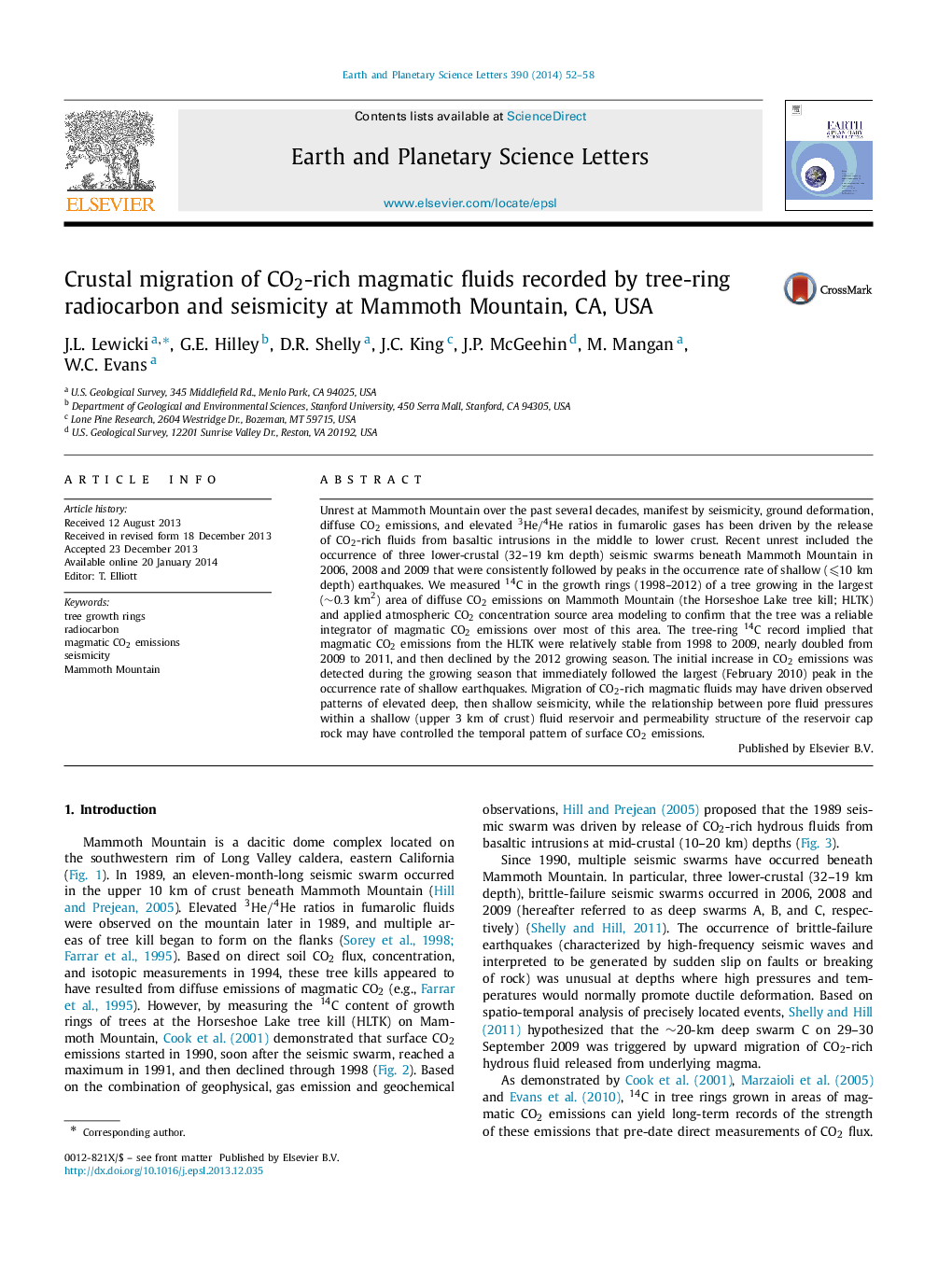| کد مقاله | کد نشریه | سال انتشار | مقاله انگلیسی | نسخه تمام متن |
|---|---|---|---|---|
| 6429573 | 1634766 | 2014 | 7 صفحه PDF | دانلود رایگان |

- C14 in tree growth rings records magmatic CO2 emissions on Mammoth Mountain, Ca.
- Source area modeling confirms tree integrates magmatic CO2 over study area.
- Peaks in shallow earthquake occurrence rate followed lower-crustal seismic swarms.
- CO2 emissions increased after a high rate of occurrence of shallow seismicity.
- Seismicity and CO2 emissions were driven by migration of CO2-rich magmatic fluids.
Unrest at Mammoth Mountain over the past several decades, manifest by seismicity, ground deformation, diffuse CO2 emissions, and elevated He3/He4 ratios in fumarolic gases has been driven by the release of CO2-rich fluids from basaltic intrusions in the middle to lower crust. Recent unrest included the occurrence of three lower-crustal (32-19 km depth) seismic swarms beneath Mammoth Mountain in 2006, 2008 and 2009 that were consistently followed by peaks in the occurrence rate of shallow (⩽10 km depth) earthquakes. We measured C14 in the growth rings (1998-2012) of a tree growing in the largest (â¼0.3 km2) area of diffuse CO2 emissions on Mammoth Mountain (the Horseshoe Lake tree kill; HLTK) and applied atmospheric CO2 concentration source area modeling to confirm that the tree was a reliable integrator of magmatic CO2 emissions over most of this area. The tree-ring C14 record implied that magmatic CO2 emissions from the HLTK were relatively stable from 1998 to 2009, nearly doubled from 2009 to 2011, and then declined by the 2012 growing season. The initial increase in CO2 emissions was detected during the growing season that immediately followed the largest (February 2010) peak in the occurrence rate of shallow earthquakes. Migration of CO2-rich magmatic fluids may have driven observed patterns of elevated deep, then shallow seismicity, while the relationship between pore fluid pressures within a shallow (upper 3 km of crust) fluid reservoir and permeability structure of the reservoir cap rock may have controlled the temporal pattern of surface CO2 emissions.
Journal: Earth and Planetary Science Letters - Volume 390, 15 March 2014, Pages 52-58